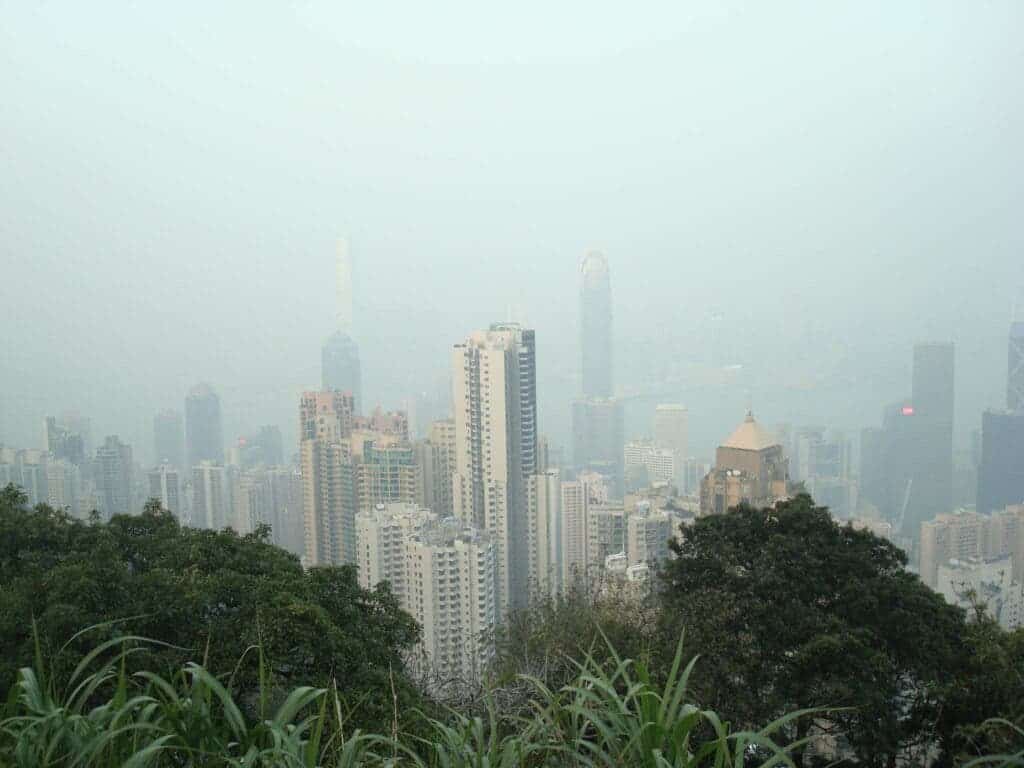Turns out, just sharing real-time data can help make a difference.
In 2008, the United States embassy in Beijing set up an air quality monitor and started tweeting readings every hour. By 2020, over 50 US embassies in 37 developing countries were doing the same, creating a large, international data set. Sharing this real-time air quality information resulted in lower levels of air pollution, according to a new study.
Image credit: Unsplash.
Air pollution is one of the leading environmental and health problems of our time. Small particulate matter has been associated with dementia and cognitive decline in adults and children, even influencing the sex of babies. However, this is a problem people are rarely aware of. Over 85% of the people that live in cities are exposed to air pollution levels that exceed the suggested guidelines but in many cases, this receives little to no attention.
A team led by Akshaya Jha, a researcher at Carnegie Mellon University in Pittsburgh, Pennsylvania, analyzed satellite data on air pollution in 466 cities in 136 low and middle-income countries, including 50 cities where the US embassies had installed the monitors. They focused on PM2.5 pollution particles, known to have harmful effects.
They found that the cities where the embassies had tweeted air pollution data saw the levels of PM2.5 drop by an average of two to four micrograms per cubic meter compared with those that didn’t. While it might not seem a lot, this would have reduced the number of premature deaths each year by a median of 303 in each city.
“The monetized benefits of reductions in pollution as a result of these monitors were large for both embassy staff and the local population,” Akshaya Jha said in a media statement. “Our findings point to the benefits of improving the availability and awareness of air-quality information in low- and middle-income countries.”
Air pollution is one of the leading environmental and health problems of our time. Small particulate matter has been associated with dementia and cognitive decline in adults and children, even influencing the sex of babies. However, this is a problem people are rarely aware of. Over 85% of the people that live in cities are exposed to air pollution levels that exceed the suggested guidelines but in many cases, this receives little to no attention.
A team led by Akshaya Jha, a researcher at Carnegie Mellon University in Pittsburgh, Pennsylvania, analyzed satellite data on air pollution in 466 cities in 136 low and middle-income countries, including 50 cities where the US embassies had installed the monitors. They focused on PM2.5 pollution particles, known to have harmful effects.
They found that the cities where the embassies had tweeted air pollution data saw the levels of PM2.5 drop by an average of two to four micrograms per cubic meter compared with those that didn’t. While it might not seem a lot, this would have reduced the number of premature deaths each year by a median of 303 in each city.
“The monetized benefits of reductions in pollution as a result of these monitors were large for both embassy staff and the local population,” Akshaya Jha said in a media statement. “Our findings point to the benefits of improving the availability and awareness of air-quality information in low- and middle-income countries.”
Understanding the data
The researchers believe that making the data accessible made people more aware of the low air quality and increase public pressure to address it via policy change. They registered a significant increase in the number of Google searches on air pollution in the cities where the monitors were installed and pollution levels afterward dropped.
Policy initiatives could have improved air quality, they argued, such as limiting the use of cars or reallocating industries from densely populated cities. The data from the monitors could have given local and national governments the evidence they need to lobby for greener policies while giving journalists relevant findings for media coverage.
“By providing credible, high-quality, information, the US government has drawn attention to high levels of pollution in cities in low- and middle-income countries across the world,” co-author Andrea La Nauze said in a statement. “The resulting reductions in air pollution levels had large health benefits for residents in these cities.”
The study was published in the journal PNAS.
Fermin Koop is a reporter from Buenos Aires, Argentina. He holds an MSc from Reading University (UK) on Environment and Development and is specialized in environment and climate change news.

No comments:
Post a Comment